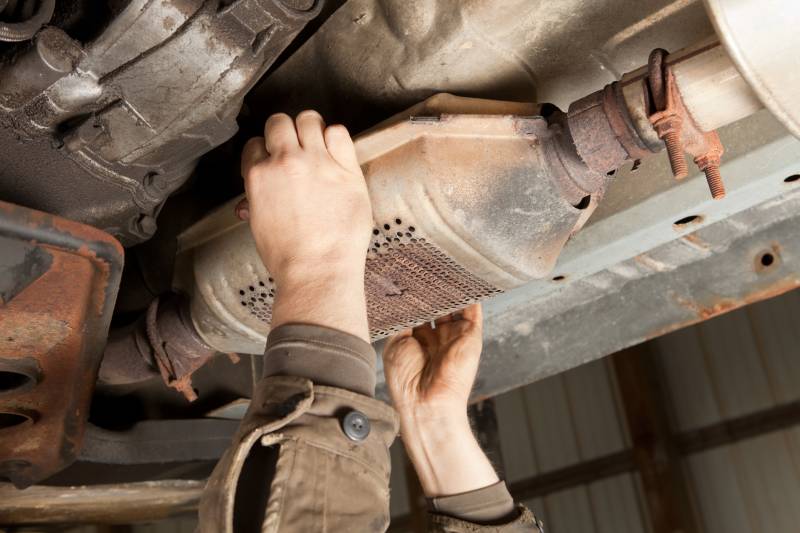How can car owners protect themselves from the wave of catalytic converter theft that has swept the country?
Claims for stolen catalytic converters doubled in the year ending June 2022, according to State Farm, the largest auto insurer in the U.S., whose customers reported more than 43,200 stolen converters that year.
And since 2019, converter theft has risen 1,215%, according to the National Insurance Crime Bureau, an industry group that tracks insurance-related crimes.
On Wednesday, the Department of Justice announced the arrest of 21 people in connection with a crime ring accused of making $545 million by trafficking stolen catalytic converters.
Catalytic converters — which helps a car clean its exhaust — have become a target for theft in large part because of the price of precious metals, like palladium and platinum, that are used in the parts.
And, crucially, their location on the exterior of a car’s underside makes them easy to steal, David Glawe of the NCIB told NPR earlier this year.
Stealing a converter takes just a few minutes and a battery-operated saw. “You slide under the car, slice through your exhaust system, and you’re in and out usually within 30 seconds to a minute,” Glawe said.
Especially at risk are cars with enough tire clearance for a thief to easily slide underneath, like SUVs and pickup trucks. Hybrids are also attractive targets because their converters contain even more precious metals.

